-
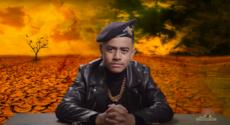
General Fiyah on Climate Change | Cultural Reset
General Fiyah explains Climate Justice from a Pacific GenZ perspective. Climate Change has become THE issue on the minds of our young ones because of how tied their futures are to the crisis. In this week's "Cultural Reset" General Fiyah breaks down the climate crisis, its current impact on the Pacific, and what a group of Pacific islanders were able to do to fight back. "Cultural Reset" unpacks relevant societal issues to the Pacific community, and how they're tied back to complicated histories. It is a look into topics ranging from Cultural Appropriation to Climate Change. Each important topic is broken down by one of our village's youngest. Our kids are taking the reigns and schooling us on pressing social, political, and environmental issues.
-
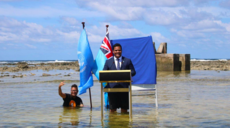
Tuvalu's Simon Kofe Nominated for a Nobel Peace Prize
This is the speech that made headlines as Simon Kofe not only spoke of the impacts of climate change on his island home but also showed it. The viral speech propelled Mr Kofe's message that in order to save the world we must save Tuvalu. Simon Kofe is a Tuvaluan politician. He was appointed as the Minister for Justice, Communication & Foreign Affairs, in the cabinet of Kausea Natano following the 2019 Tuvaluan general election. This week Minister Kofe is making headlines once again as he has been nominated for a Nobel Peace Prize by Norwegian politician Guri Melby. Mr. Kofe told media that he is still in disbelief. "Our message has been, if you save Tuvalu now, you are essentially saving the world.
-
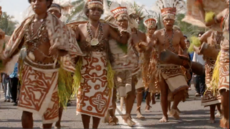
Sustaining Forests for Climate, Nature and People - Papua New Guinea
Within Oro Province in Papua New Guinea is the Managalas Plateau which is its largest conservation area. The plateau is the home for the rarest of species including the largest butterfly in the world called Queen Alexandra's Birdwing. Illegal tree logging has been a long withstanding issue threatening the livelihood of the local people of Papua New Guinea and the natural habitats. Gary Juffa who is the Governor of Oro Province and a member of the 10th Parliament of Papua New Guinea, leads the fight against illegal tree logging to secure and preserve their forest as the key to PNG's national wealth and prosperity.
-

Meet the former beauty queen fighting to save her island home | Pandemic Warriors
When the seas swallowed her grandparents’ home, Gladys Habu was compelled to become a climate activist. The former Miss Solomon Island has teamed up with Australian researcher, Simon Albert, to track the disappearance of islands to rising sea level across the Solomon Islands. And she’s taken her fight to the international stage, making sure world leaders at COP26 were aware of impacts of climate change on her community.
-
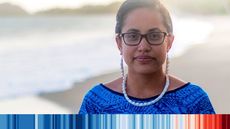
Too late for mitigation, Marshallese face climate adaptation | Q+A 2021
Efforts to mitigate climate change have failed, and now the Marshall Islands are planning for how they’ll adapt to a difficult and dangerous future, says an envoy at the COP26 climate summit in Glasgow. Kathy Jetñil-Kijiner, a Marshall islands Climate Envoy to COP26 talks with Jack Tame.
-
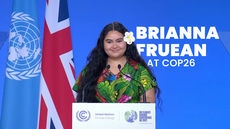
Pacific Climate Change Leader Brianna Fruean's Speech at COP26
Pacific Climate Change leader Brianna Fruean woke up the world with the strength of her words at #COP26 - ‘E pala ma’a ae le pala upu - even rocks may decay but words are everlasting' - In the Pacific we are not drowning we are fighting!! - #Watch her full speech in front of world leaders - US President Joe Biden, UK Prime Minister Boris Johnson, Prince Charles, British broadcaster Sir David Attenborough and more at COP26 in Glasgow in the video above and you can read it in full below - {{26763}} "When I was a little girl I was taught the importance and impact of words. In my culture there is a proverb that goes, 'e pala ma’a ae lē pala upu'. It means that even stones decay, but words remain. A lesson in knowing how words can be wielded. How text can change everything. How each word you use is weighted. How switching 1 word or number can reframe worlds. How 'climate action' can be vastly different from 'climate justice'. How 2 degrees could mean 'the end' and 1.5 could mean 'a fighting chance'. You all have the power here today to be better. To remember that your meeting rooms and drafting documents are not just black and white objects. To remember that in your words, you wield the weapons that can save us or sell us out. I don’t need to remind you of the reality of our vulnerable communities. If you’re in this room you know what climate change is doing to us. You don’t need my pain or tears to know that we’re in a crisis. The real question is whether you have the political will to do the right thing, to wield the right words and follow it up with long overdue action. If you’re looking for inspiration on climate leadership, take a look at young Pacific people. We are not just victims to this crisis, we have been resilient beacons of hope. As Pacific youth we have always rallied behind the warrior cry 'we are not drowning, we are fighting'. This is my message from Earth to COP. I hope you remember my words, because 'e pala ma’a ae le pala upu' Thank you" {{26767}} - Check out some of her interviews with global media. She was interviewed by BBC News following her powerful speech at COP26 - you can watch a snippet of this interview below - {{26768}} She then appeared on the 'Leading British Conversation' here with by Iain Dale.
-
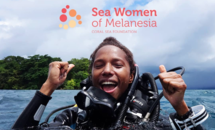
‘Sea Women of Melanesia’ fight to protect 'Amazon' of Pacific | Pandemic Warriors |
With the world’s eyes on COVID, the Sea Women of Melanesia, an all-women dive team have been working to protect one of the world most important coral ecosystems. The fledgling dive team has captured critical data about a significant coral-bleaching event in the ‘Amazon of the sea’ off the coast of Papua New Guinea and the Solomon Islands. Now the divers want to harness their talents to find more ways to protect coral reefs. * Pandemic Warriors is produced by ABC Australia with funding from the Australian Department of Foreign Affairs and Trade.
-
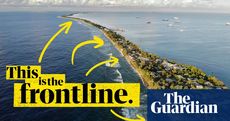
'One of the greatest injustices': Pacific islands on the frontline of the climate crisis
Pacific countries are among those most at risk amid the climate crisis. Islands are becoming more difficult to inhabit and people across the region face an impossible decision: to stay in a dangerous place, or leave their homes and culture behind. Samoan journalist Lagipoiva Cherelle Jackson talks about the cost of global heating and what Pacific leaders are asking for at the Cop26 climate summit in Glasgow.
-

#OurClimateFuture | The PhD Candidate
An anthropology PhD candidate and teacher, Tohoa (MahMah) Tetini's research is centred around amplifying indigenous Pacific Island voices in climate change spaces. For MahMah, a second-generation Pasifika living in Aotearoa, the impacts of climate change are personal. Due to rising sea levels, ocean acidification, and increases in the intensity of natural disasters, MahMah fears her ancestral homeland in the Cook Islands may one day be uninhabitable. “In our whenua, in our moana, we hold our faith, we hold our history. The way in which we feed ourselves, our culture, our traditions, our songs, our dance. Climate change threatens all of that,” she says. MahMah’s research seeks to help people understand that Pasifika people are not vulnerable, helpless, or victims. “Our whole history is based off resilience,” she says. “In order for us to move forward in a progressive and sustainable way, everybody needs a seat at the table, and this includes our most marginalised people... By working together as a collective, all voices and lived experiences are valued, are worthy, are acknowledged.” “A lot of the time, we looked to our ancestors for guidance and wisdom. But we also have to understand that one day we will be ancestors. What will we pass on to our tamariki?"
-
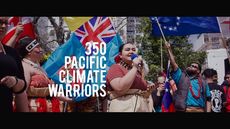
Pacific Eco Warriors - 350 Pacific Climate Warriors
This week we hear from a group called 350 Pacific Climate Warriors - a collective of young Pacific people with a focus on protecting Pacific environments and improving attitudes towards the environment throughout the Pacific.
-
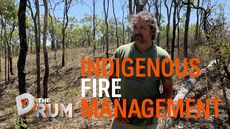
FIRE MANAGEMENT - CULTURAL BURNING
Indigenous fire practitioner Victor Steffensen wants to see a change in the way Australians manage the land.
-
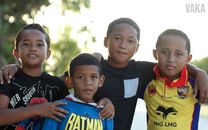
VAKA
VAKA is a short documentary about the energy and resilience of the Tokelauan people as they weave their customary-wisdom regarding the environment with modern eco-technologies to respond to climate change. Tokelau was the first nation to aim for 100% of its electricity to be generated from solar as a result of the New Zealand funded Tokelau Renewable Energy Project in 2012. Their coral island atolls contribute a minimal amount of global greenhouse gas emissions, yet they are the first to be impacted by climate change. Tokelau's resilience in their daily response to the climate crisis exemplifies how they are leading by example.
-
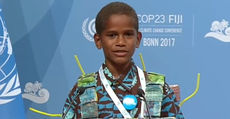
Fijian climate advocate Timoci Naulusala calls on world leaders to act against climate change
Fourteen year old Timoci Naulusala of Naivicula in Tailevu has yet again made Fiji proud after delivering an eloquent speech about the devastating impacts of climate change in Fiji and the Pacific. The young advocate co-chaired the Inter Generational Town Hall sessions at the UN Youth Climate Summit in New York, alongside Deputy Secretary General of the United Nations Amina Jane Mohammed, Marshall Islands President, Her Excellency Hilda Heine and a few other world leaders.
-
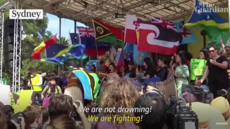
GLOBAL CLIMATE STRIKE
Global Climate Strike demonstrations inspired by teenage Swedish activist Greta Thunberg took place ahead of the UN climate summit in New York and kicked off in Australia & other countries around the Asia/Pacific rim on Friday. In over 150 countries, people are stepping up to support young climate strikers and are demanding an end to the age of fossil fuels. As young people across the planet march on cities to demand action, those in nations already suffering the dire impact of environmental catastrophe have added their voices to calls for urgent action. {{14509}} Young people in the Solomon Islands, Marshall Islands & Kiribati also demonstrated on Friday with children joining in chanting 'We are not sinking, we are fighting'. They did not take to the streets like other young global climate protestors across the world, they symbolically took to the seas. Earlier this morning Tokelau Pacific Climate Warriors joining the Global Climate Strike. {{14507}} The Global Climate Change Strike runs through until the 27th of September. You can check the Global Climate Strike website here for where demonstrations will be held near you. For those living in New Zealand, strikes around the country will take place this Friday the 27th of September.
-
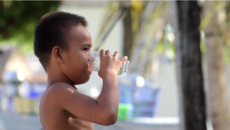
Tokelau: Vital Health
The Pacific Adaptation to Climate Change (PACC) project is working in Tokelau to improve access to clean water at the household and community level. These efforts are working to help communities adapt to their changing climate, and to improve the health of the people in Tokelau, PACC has installed First Flush Diverters on 99% of households in all three of Tokelau's atolls. This ensures that contaminants from the roofs do not enter the drinking water tanks. The project is also building awareness in the communities on water and sanitation issues, as well as renovating or replacing water infrastructure such as pipes, guttering, and water tanks.
-

Climate Change in the Pacific: FOOD
The world over, agriculture faces an unprecedented threat from climate change. Agriculture on small islands faces additional and unique challenges. The fertile coastal plains, where farming is often concentrated, are also in the front line for sea level rise and coastal erosion. As the sea encroaches, soils are becoming salty and waterlogged. On very small islands, and especially low-lying atolls, moving farms further inland is not an option. On larger islands, moving inland and uphill often means destroying forests, with environmental consequences that add to the problem. Improving the resilience of food production systems is one of the three focus areas of the Pacific Adaptation to Climate Change (PACC) programme. Fiji, Palau, Papua New Guinea and the Solomon Islands have been working to improve the resilience of their food production systems. These efforts include improving sustainable farming methods, introducing climate-resilient crops, and training in food processing and preservation. Supported by the United Nations Development Programme (UNDP) and the Secretariat of the Pacific Regional Environment Programme (SPREP), the Pacific Adaptation to Climate Change (PACC) programme is the first major climate change adaptation initiative in the Pacific region. Since it began in 2009 the programme has laid the groundwork for more resilient Pacific communities that can cope with climate variability today, and climate change tomorrow. This short video, narrated by renowned astrophysicist Neil deGrasse Tyson, highlights the PACC projects that are working to improve access to an adequate supply of healthy food.
-

Pacific Adaptation to Climate Change - Cook Islands: Vital Harbour
This PACC project in the Cook Islands is climate proofing Mangaia Harbour, and protecting the island’s coastline. The project focuses on coastal management on Mangaia Island. The badly damaged harbour at Mangaia harbour – the transportation hub and entry point for all supplies to the island – was destroyed by tropical cyclones in early 2005. The project intervention was to develop a stronger and safer harbour that can withstand current and future climate-related threats. For more information on the project, please visit the following pages: www.undp-alm.org/projects/bf-pacc-cook-islands www.sprep.org/pacc www.pacificclimatechange.net
-

Subject to Change
Exploring the impacts Climate Change is having on our world, "Subject to Change" is a collection of interviews and personal stories from across the Pacific in the form of a documentary film. The film both provides an insight into the New Zealand response to the global objectives set by the Paris Agreement, and shares the intimate true stories from Batiki Island, on the frontline, in a truthful and evocative way. It is supported by the Ministry of Foreign Affairs and Trade.
-

FIJI - Vital Food
Climate change in Fiji is causing a large increase in the incidence and intensity of extreme rainfall - the ensuing floodwaters are simply overwhelming the current drainage systems in Fiji's low-lying agricultural areas, and when the rivers and creeks are unable to drain excess water, crops are ruined, healthy local foods become scarce, the local economy is threatened, and the staple diet of the Fijian people is compromised. Fiji's PACC pilot project aims to increase food security for local communities by demonstrating techniques that can ameliorate the effects of flooding, and even the flooding itself. For more information read the UNDP-ALM project profile: undp-alm.org/projects/bf-pacc-fiji
-

TUVALU: Vital Water
As an atoll nation, Tuvalu is very much affected by changes in rainfall distribution patterns. With limited groundwater, people on Funafuti atoll depend heavily on rainfall to supply all their water needs. A period of two to three weeks of no rainfall can cause serious water shortages, reducing water levels in many of the water tanks by 50%. The current water infrastructure is not able to cope with changes in rainfall regime, which has an adverse impact on village livelihoods and agricultural production. The PACC project in Tuvalu focuses on improving the water infrastructure, to assist people to better cope with climate related droughts.
-

SUSPENDED GENERATION - THE KIDS OF KIRIBATI
Suspended between a home they love, and a world they are only beginning to understand, the kids of Kiribati face the harsh realities of climate change – rising sea levels, and changing weather patterns that threaten everything from safe food and water, basic shelter, to the very survival of their culture. Wireless Docs: Suspended Generation is their story told from their perspective.
-

Waste on the Rock - Waste Management in Niue
"What we do on the land impacts hugely on our ground water" Fiafia Rex, founder of the 'Oma Tafua Marine Mammal NGO' looks at the effects waste management or lack of good waste management has on Niues water and her ocean and ocean life.
-

The Fight Against Rising Tides - Black Pearls in the Cook Islands
The Cook Islands pearl industry in the Northern Group used to be one of the key economic drivers for the Cook Islands, just behind tourism. This documentary tells of the fight against rising tides and how climate change is seriously affecting pearl farming & the economy of the low lying attolls in the Northern Group of the Cook Islands.
-

DROWNING ISLANDS - The Sea Swallows Samoa
While climate change is debated on the world stage, the reality for those in the Pacific is that it is banging down their front door. The people of low lying atolls like Kiribati and Tuvalu are being forced to flee their land due to rising sea levels and the reality for our huge communities of Samoans around the globe is that their motherland will soon follow. Samoan Pacific Climate Warrior, Brianna Fruean, shows us the affect that sea level rising is having on her homeland and warns of the many ways our Samoan way of life will have to change as the fish supplies drop, the sea erodes the coastlines and more and more cyclones hit our shores. The paradise that was Samoa as we know it is rapidly washing away as the ocean comes in. What can we do to look at standing up to save our Island nations?
-

Climate Change & the Pacific
Kosi Latu, Director General of the Secretariat of the Pacific Regional Environmental Programme (SPREP) talks about the effects on climate change in the Pacific and how it affects the Pacific at every level in society.
-

Kiribati: A drowning paradise in the South Pacific
Climate change and rising sea levels mean the island nation of Kiribati in the South Pacific is at risk of disappearing into the sea. But the island’s inhabitants aren’t giving up. They are doing what they can to save their island from inundation. Can COP23 help make a difference? UN estimates indicate that Kiribati could disappear in just 30 or 40 years. That’s because the average elevation is less than two meters above sea level. And some of the knock-on effects of climate change have made the situation more difficult. Kiribati can hardly be surpassed in terms of charm and natural beauty. There are 33 atolls and one reef island – spread out over an area of 3.5 million square kilometers. All have white, sandy beaches and blue lagoons. Kiribati is the world’s largest state that consists exclusively of atolls. A local resident named Kaboua points to the empty, barren land around him and says, "There used to be a large village here with 70 families." But these days, this land is only accessible at low tide. At high tide, it's all under water. Kaboua says that sea levels are rising all the time, and swallowing up the land. That’s why many people here build walls made of stone and driftwood, or sand or rubbish. But these barriers won't stand up to the increasing number of storm surges. Others are trying to protect against coastal erosion by planting mangrove shrubs or small trees. But another local resident, Vasiti Tebamare, remains optimistic. She works for KiriCAN, an environmental organization. Vasiti says: "The industrialized countries -- the United States, China, and Europe -- use fossil fuels for their own ends. But what about us?" Kiribati's government has even bought land on an island in Fiji, so it can evacuate its people in an emergency. But Vasiti and most of the other residents don't want to leave.
-

Climate Change in Fiji 'Our Home Our People'
Fiji has used 360° Virtual Reality (VR) as a key part of its global push for stronger action on climate change at this weeks COP23 Climate Change conference which starts today. As part of its Presidency of COP23 in Bonn, Germany, the Fijian Government will launch an immersive VR experience called Our Home, Our People that aims to transport delegates, decision-makers and the global community to Fiji to experience the current and future impacts of climate change on the Pacific and particularly those rebuilding from last year's devastating Category 5 Tropical Cyclone Winston. One of the characters in the film - a young girl named Catalina - is from Vunisavisavi a remote coastal community in Fiji’s Vanua Levu province which has already seen significant relocation due to the impacts of rising sea levels during the shooting of the film. The aim of the Our Home, Our People VR project is to give audiences – both world leaders, decision-makers at COP23 in Bonn, and people across the world – the chance to see, experience and understand the impact of climate change on Fiji and our Pacific people, and why we are calling for stronger action to reduce greenhouse gas emissions, and increased investment in climate adaptation. ‘Vei lomani’ is a Fijian expression meaning ‘love in action’, and it is a value at the heart of Fijian life. And it is in the spirit of ‘Vei lomani’ that Fijians are coming together to respond to the impacts of climate change. Experience the story of Catalina, Rai, Asmita and Rupeni in 360° VR, and explore more at www.ourhomeourpeople.com. ‘Our Home, Our People’ is best viewed with a VR headset and headphones.
-

The Pacific representing it big at COP 21 in Paris!
More than 100 heads of government and 40,000 other attendees are currently meeting in Paris for the United Nations Conference on climate change, the 21st Conference of Parties (COP 21), with a strong delegation representing the Pacific Islands. Talissa Koteka of the Cook Islands presents a side event entitled "We the Pacific" at the event co-ordinated by the Pacific Island Development Forum and the Pacific Island Climate Action Network. Representing the Prime Minister, Koteka reminded all that the emissions of the Pacific islands are negligible – while we have not caused the climate change problems experienced, but are the victims of its' effects. Fellow speakers were the President of Kiribati, Anote Tong; Prime Minister of Tuvalu, Enele Sopoaga, the Secretary General of PIDF Francois Martel and the Minister of National Disaster Management of Fiji, Inia Seruiratu. Brianna Fruean is the SPREP Youth Ambassador hailing from Samoa, and was lucky enough to be there at the opening of the Indigenous People's Pavilion, showcasing indigenous cultures from all corners of the world. Speakers spoke about indigenous people in the forefront of Climate Change and our ability as people who have a spiritual understanding of the land to lead change - going back to our roots to find solutions. "My Pacific Island brother from Tokelau told the jam-packed pavilion today the story of the coconut and how it represents sustainability of the islands as it provides leaves that thatches homes, juice that quiches thirst and flesh that fills the stomach. He reminded the room that indigenous societies are the pioneers of sustainability and together with the rest of the world we can take methods of the past to ensure a better future for not just our earth but our children’s earth."
-

#HelpTuvalu
LG Smart TV have joined up with Tuvalu to help bring about more awareness to Climate Change. With a population of 12,000 people and rapidly rising sea levels, Tuvalu may quickly become the world's first country to disappear. For more information and to sign the petition, check out them out here!
-

Sea-level rise claims it's first islands
Sea-level rise, erosion and coastal flooding are some of the greatest challenges facing humanity from climate change. Source: The Conversation Recently at least five reef islands in the remote Solomon Islands have been lost completely to sea-level rise and coastal erosion, and a further six islands have been severely eroded. These islands lost to the sea range in size from one to five hectares. They supported dense tropical vegetation that was at least 300 years old. Nuatambu Island, home to 25 families, has lost more than half of its habitable area, with 11 houses washed into the sea since 2011. This is the first scientific evidence, published in Environmental Research Letters, that confirms the numerous anecdotal accounts from across the Pacific of the dramatic impacts of climate change on coastlines and people. All that remains of one of the completely eroded islands. Simon Albert, Author provided A warning for the world Previous studies examining the risk of coastal inundation in the Pacific region have found that islands can actually keep pace with sea-level rise and sometimes even expand. However, these studies have been conducted in areas of the Pacific with rates of sea level rise of 3-5 mm per year – broadly in line with the global average of 3 mm per year. For the past 20 years, the Solomon Islands have been a hotspot for sea-level rise. Here the sea has risen at almost three times the global average, around 7-10 mm per year since 1993. This higher local rate is partly the result of natural climate variability. These higher rates are in line with what we can expect across much of the Pacific in the second half of this century as a result of human-induced sea-level rise. Many areas will experience long-term rates of sea-level rise similar to that already experienced in Solomon Islands in all but the very lowest-emission scenarios. Natural variations and geological movements will be superimposed on these higher rates of global average sea level rise, resulting in periods when local rates of rise will be substantially larger than that recently observed in Solomon Islands. We can therefore see the current conditions in Solomon Islands as an insight into the future impacts of accelerated sea-level rise. We studied the coastlines of 33 reef islands using aerial and satellite imagery from 1947-2015. This information was integrated with local traditional knowledge, radiocarbon dating of trees, sea-level records, and wave models. Waves add to damage Wave energy appears to play an important role in the dramatic coastal erosion observed in Solomon Islands. Islands exposed to higher wave energy in addition to sea-level rise experienced greatly accelerated loss compared with more sheltered islands. Twelve islands we studied in a low wave energy area of Solomon Islands experienced little noticeable change in shorelines despite being exposed to similar sea-level rise. However, of the 21 islands exposed to higher wave energy, five completely disappeared and a further six islands eroded substantially. The human story These rapid changes to shorelines observed in Solomon Islands have led to the relocation of several coastal communities that have inhabited these areas for generations. These are not planned relocations led by governments or supported by international climate funds, but are ad hoc relocations using their own limited resources. Many homes are close to sea level on the Solomons. Simon Albert, Author provided The customary land tenure (native title) system in Solomon Islands has provided a safety net for these displaced communities. In fact, in some cases entire communities have left coastal villages that were established in the early 1900s by missionaries, and retraced their ancestral movements to resettle old inland village sites used by their forefathers. In other cases, relocations have been more ad hoc, with indivdual families resettling small inland hamlets over which they have customary ownership. In these cases, communities of 100-200 people have fragmented into handfuls of tiny family hamlets. Sirilo Sutaroti, the 94-year-old chief of the Paurata tribe, recently abandoned his village. “The sea has started to come inland, it forced us to move up to the hilltop and rebuild our village there away from the sea,” he told us. In addition to these village relocations, Taro, the capital of Choiseul Province, is set to become the first provincial capital in the world to relocate residents and services in response to the impact of sea-level rise. The global effort Interactions between sea-level rise, waves, and the large range of responses observed in Solomon Islands – from total island loss to relative stability – shows the importance of integrating local assessments with traditional knowledge when planning for sea-level rise and climate change. Linking this rich knowledge and inherent resilience in the people with technical assessments and climate funding is critical to guiding adaptation efforts. Melchior Mataki who chairs the Solomon Islands' National Disaster Council, said: “This ultimately calls for support from development partners and international financial mechanisms such as the Green Climate Fund. This support should include nationally driven scientific studies to inform adaptation planning to address the impacts of climate change in Solomon Islands.” Last month, the Solomon Islands government joined 11 other small Pacific Island nations in signing the Paris climate agreement in New York. There is a sense of optimism among these nations that this signifies a turning point in global efforts. However, it remains to be seen how the hundreds of billions of dollars promised through global funding models such as the Green Climate Fund can support those most at need in remote communities, like those in Solomon Islands.
-

Solosolo village relocating - climate change
The entire village of Solosolo - which has one of the few black sand beaches in Samoa - is moving inland at the face of sea level rise hastened by sand mining operations. Source: Talamua Online The seawall built years ago to stop the erosion is now sinking, with the village opting to relocate their families to higher ground - yet a few still want to reside on the coastal area. To’omata Nora Leota, told media about the vulnerability of the village and people from the sea rise, saying the river on one side of the village is known to have swept the whole bridge with it during the rainy season. “We saw the danger during the (2009) tsunami and we ran to the hills, and it was from then on that several families decided to relocate to higher ground,” said To’omata. She took the media on a tour of the village and pointed to the impacts of the sea on the coastal area where the malae (field) was raised higher than the other. {{31637}} Asked if the village was always like that, To’omata said “no, it is the work of the sea and the river,” She pointed out a water pipeline supposed to divert the flow of the river to the sea; instead, it pumps sea water into the village during high tide. “In the next ten years, the waves will be breaking here,” pointing to the particular area in the village malae. “When we dig the earth for graves, the seawater comes out first,” she explained. To’omata said despite the decision to relocate, it was not until 3 years ago that the Minister of the Congregational Christian Church of Samoa at Solosolo made the move to relocate and the rest followed. Some churches are now well developed on higher ground with the exception of the 2 mainstream churches, the Catholic and CCCS whose churches are still in the coastal area, said To’omata. She said 60% of the village has now relocated to higher ground and have asked for a grant to build a seawall to fend off the rising sea. However, that too has failed as evident by the way it’s sinking slowly, and according to To’omata, sand mining has played a major impact in that area. The village has approached the government Ministry of Natural Resource and Environment (MNRE) responsible for issuing licenses to stop sand mining because she believes “it’s destroying our village and our safety.” Besides the sea level rise, Solosolo has few rivers flowing from the mountain which sometimes causes landslides after heavy rain. Villagers are known to have used canoes to cross the flooded rivers when they burst their banks. To’omata said Solosolo is lucky to have a place to relocate to, and she hopes families still remaining in the coastal area will consider moving for their safety.
-

MOANA and Climate Change!
Over the past few weeks our very own Polynesian heroine has taken the world by storm. After years of trying to search for little bits of ourselves in Jasmine, Mulan and Elsa, our Pacific people finally have a MOANA to call our very own. Instead of looking to the western world, the western world is now stopping, turning around and looking to us. Almost everything in MOANA gave me chills, from the Tatau on Chief Tui to the familiar beats of Te Vaka. Although, there was one scene that stood out the most to me, the scene where Grandma Tala’s spirit appears to reinsure MOANA of her purpose and MOANA sings “I am a girl who loves my island, I’m the girl who loves the sea, it calls me”. At the sound of those lyrics images of Pacific climate change warriors and activists started appearing in my head. I saw Jacynta Fuamatu leading rallies, I saw Raedena Solomona blocking coal ships, I saw Kathy Jetnil-Kijiner reading poetry and I saw 11 year old me planting trees while annoying everyone in my family with big talk about saving the world. At this moment in the movie it clicked, MOANA in part, is a huge metaphor about climate change and man’s relationship with Mother Nature. Brianna Fruean with MOANA director John Musker holding up the Pacific Climate Warriors advocacy message 'We are not drowning, we are fighting' Once I realised this I re-analysed everything. In the beginning life was perfect; Te Fiti gave people sacred gifts in form of islands, oceans and natural resources. In return, people loved and respected her. This is a true representation of how the human race used to live in the past; we took what we needed and nothing more. However, a few antagonists became greedy, wanting more and more including the heart of Te Fiti. Once the heart was stolen, evil plagued the land and Te Ka the lava monster appeared. Te Ka to me was climate change in life form. It was evil, merciless, and destructive. Without the heart of the mother island, MOANA’s small island of Motunui started to die. Fish became scarce, the coconuts started to rot and the ocean grew to be unforgiving to ordinary man. MOANA director Ron Clements This is a reality of Pacific people today, our fish stocks are declining, crops are dying and the ocean our ancestors taught us to love is now something we fear. Now our weather patterns are unpredictable, tides growing stronger and sea level rising is becoming a real life villain. Nothing stands to be the same as it once did when our great grandparents roamed our lands. In the Disney film, even though the reality was sad, there was a silver lining and a beacon of hope. This was MOANA. She knew the problem was bigger than her, but her love for her island was bigger than her fear of Te Ka. There are so many real life MOANAs out there in the world today, fighting for their islands and not backing down to climate change, nor the hands that feed it. MOANA director Ron Clements & Brianna Fruean After rethinking the whole movie I wondered if I was the only one who saw these climate metaphors and if the directors wrote these in on purpose. On Wednesday night at the Moana blue carpet event at Apollo Cinemas I had the amazing opportunity to ask the directors John Musker and Ron Clements myself. I asked the movie masterminds, “in MOANA the land was in distress... I interpreted this as climate change. Was this an intention of your storytelling?” To which they replied, “Yes it’s definitely there. Even with the idea that a lot of people aren’t seeing the problem. People on the island of Motunui, many of those people are either in denial or not aware. Or even like MOANA’s father Chief Tui (he) does kind of not want to accept that.” Ron and John highlighted such an important part of our problem today, the fact that so many people are still in denial of climate change or not educated enough about the issue. While talking about the themes of MOANA, John Musker said, “We’re telling an allegory of today and mans relationship to nature and the perils if you don’t treat Mother Nature correctly. There’s a reciprocity that man and nature has to have, there has to be this give and take. That’s what we were trying to really indorse in the movie, so that it can communicate to children as well as adults. Perhaps plant the seeds that you have to do right by nature.” If I was trying to get across a message to the world I wouldn’t pick any other way than through a phenomenal Disney movie. MOANA taught us countless valuable messages about female empowerment, value of heritage, importance of culture and mans vital relationship with nature. So many imperative lessons all in one great film; but the one lesson that rings in my head and the reason I encourage everyone to watch MOANA, is that it told a narrative that the world’s problems may be big, and people may not believe you can fix them, but never let that question your power to make a difference. Remember that even a young girl from a tiny island in the middle of the vast Pacific Ocean can change the world. “If I go, there’s just no telling how far I’ll go” – Moana By Brianna Fruean Images by Ken Taitin Suggested Links: Tuvalu - Islands on the forefront of Climate Change Disney's Special screening of MOANA in Samoa
-

NEW SEAWALL FOR TUVALU
The impact of one of the other biggest cyclones ever to hit the Pacific, Cyclone Pam, is still being felt 18 months after the event in Tuvalu. An Australian company has begun constructing a 500-metre-long seawall, to help the Nuku-fetau atoll better withstand cyclones and other severe weather events. Hall Pacific specialises in climate change adaptation works and Michael Bissett, its chief operating officer, says the new wall will be a great improvement on the previous structure, which was destroyed by the storm surges during Cyclone Pam. Hall Pacific Managing Director Cameron Hall also said the cyclone highlighted the inadequacy of the existing seawall and the importance of having a robust barrier in place to protect against large waves along the open stretch of coastline. Fijians and Tuvaluans made up the majority of the project workforce, with six Tuvaluan locals trained as truck drivers, machine operators, and leading hands as part of the works. “Where possible, we aim to source all general and skilled laborers from the island where the project is based, and we’re proud to have a total of 19 Pacific Islanders working as part of our team in Nukufetau.” says Cameron Hall. Mr Hall said while the remote location of work site presented a unique set of challenges, the Hall Pacific team was well-equipped to tackle the task at hand. “Logistically, Nukufetau is only accessible by sea, which means our crews are flown to the main island of Funafuti, and then travel by ship for a further 10 hours until they reach the atoll. To ensure we can accommodate workers in the remote camp, we have mobilised all equipment and supplies on our barge, including excavators, trucks, food, fuel and water.” The $8 million project which was commissioned by the United Nations Development Programme is expected to be completed towards the end of 2016. Source: ABC News Australia & Newswire Fiji
-

The Voice of the Pacific #MyClimateActionStory
In August 2015, youth from around the Pacific gathered in Apia, Samoa to share their climate changes stories, and to learn from one another. “Pacific people are not drowning. We are fighting. Every day we see the devastating effects of sea level rising but, we deny giving this global threat power over our lives. Our will to overcome human resistance to significant actions that must be taken to reverse climate change impacts on our Mother Earth; our Pacific Ocean will endure.”
-

Dear President Obama - Kiribati
18 yr old deaf Kiribati student Toatang Tatake appeals to President Obama and the world community about the increasingly desperate situation faced by his small island nation, as it faces the reality of rising tides and climate change. An appeal to the heart from one of the most vulnerable, in a nation of the most vulnerable. A Nei Tabera Ni Kai Production - 2015
-

Samoa: Paradise in Danger
Our Pacific Island nations are bearing the brunt of Climate Change and it's effects on the planet. Filmmaker Boris Ersson visited the village of Tafua in Samoa and followed 12 year old Nelisa Feagaiga. Several storms have destroyed the village and the school must be moved inland, away from the ocean. In spite of the problems the children play and sing in their tropical paradise. At the end of the film Nelisa sends a strong message to the leaders of the world to save our planet.
-

Climate Change vs Traditional Navigation
Check out the amazing work by the Waa'gey Group - who hope to get more and more youth involved in the use of traditional navigation! The Waa'gey team give a workshop to Yap Catholic High School students about how climate change will impact traditional navigation and possibly change the culture of Yap, and the other islands of the Federated States of Micronesia. For more information check out waagey.org, or fsmnavigator.org.
-

TUVALU - Islands on the forefront of Climate Change
With photography by Robin Hammond and produced by Panos Pictures, this multimedia piece looks at the island nation of Tuvalu, as the Tuvaluan people become some of the first environmental refugees, a direct result of man-made climate change. In December 2009 a treaty to replace the Kyoto protocol was drawn up at the climate change conference in Copenhagen. At a preliminary summit in March of 2009, scientists presented information that revised previous estimates of future sea level rise. The new figures suggested that by the end of the century the oceans could be one metre or more above their current levels. Coastal regions will be flooded and low-lying nations such as the tiny South Pacific country of Tuvalu could be submerged. The impact of rising seas and the increase in extreme weather events can already be seen in Tuvalu. It is one of 22 Pacific island nations with 7 million inhabitants between them that contribute only 0.06% of global greenhouse gas emissions but are three times more vulnerable to climate change than countries in the North. At the primary school in Funafuti, children are taught about climate change from the age of six. They are also learning what it means to emigrate, because this could be the last generation of children to grow up in Tuvalu. Its people are already in flight. More than 4,000 live in New Zealand, and the Tuvaluan government is planning the migration of the remaining 10,000. Credit: Panos Pictures To see more of Panos Pictures work go to panos.co.uk
-

Small Islands and Climate Forecasting
This video from the World Meteorological Organization (WMO) shows how small island nations such as Samoa and Jamaica are using new advances in climate forecasting to boost economic opportunities in areas such as coffee production and renewable energy. Suggested Links: Weathering the Storm Inspiring Islanders - Fenton Lutunatubua
-

WEATHERING THE STORM
Building a Stronger Tonga The growing impact of Climate Change means that Tonga is becoming even more vulnerable to the impacts of extreme weather. On January 11 2014, Tongas Ha'apai Islands were hit by Cyclone Ian the most powerful storm ever recorded in the country. This documentary shows how the community coped and rebuilt after the cyclone and how they learned greater self reliance & community resilience. Suggested Links: Pray for Tonga - Cyclone Relief Heilala helps Tonga Rebuild
